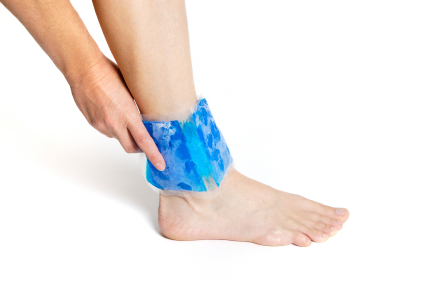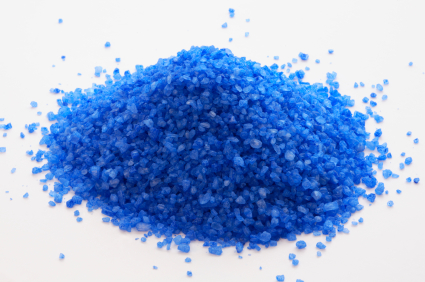Achy feet are a common problem, especially among athletes and anyone who spends a lot of time on their toes. However, there is a fine line between tired feet and a minor injury, and it is important to recognize when an injury has occurred in order to avoid aggravating the problem.
Too often, minor injuries to the feet, ankles, and knees are ignored by young athletes because they believe their youth protects them from injury or they are worried about letting down their coach or teammates. When those small injuries are left untreated, a minor irritation can turn into a serious problem later on.

I learned this lesson the hard way on the ski slopes when I was younger. I was spending the day with friends, and I crashed at the top of one of my favorite trails. When I went down, my knee twisted and I noticed that it hurt every time I put weight on that leg. It was still early in the day and I didn't want to miss a day of fun with my friends, so I pushed the pain to the back of my mind and kept on skiing for a few more hours-- trying to baby my injured leg as much as possible. Eventually, the pain worsened so I decided to wait in the car for the last two hours of the day, where I realized that my knee was swollen to the size of a large grapefruit.
After visiting with a doctor, I found out that I would need knee surgery to correct the problem. When I heard that surgery was needed, there was one question in the back of my mind: could the surgery have been avoided if I would have stopped skiing after my crash? Even though the pain wasn't severe at first, it is very possible that a small injury was aggravated because I made the choice to continue skiing that day.
Pain: a warning sign
It is important to understand that we experience pain for a reason. When pain is present, our body is trying to tell us that something is wrong and it needs some attention. Minor pain may be the result of a minor injury, such as a hairline fracture or damaged muscles or tendons. If you find that resting brings you a little relief, but the pain quickly returns when you are active again, then it is likely that you have an injury that needs to be treated.
A seemingly small injury, such as a hairline fracture, may feel like more of an annoyance to the athlete, but overusing the leg by continuing to participate in the sport may result in the fracture getting bigger and the bone weakening. Eventually, a larger fracture can cause the bone to break, so it is very important to allow the bone to heal completely before playing sports again.
Another example is an aggravated tendon. If a small injury occurs, the area may become inflamed and feel painful. In order for the inflammation to decrease it is necessary to allow the injury to rest and rebuild. If your child continues working that leg by participating in sports, then the inflammation will only get worse because it won't have time to heal.
Home treatments
If the pain is minor, then you may consider a few home treatments at first to see how it does. Common remedies include:
- Take a break from sports: When your child notices that pain is present, it is important to stop participating in sports or any activity that could strain the injury. They need to give it time to heal instead of pushing through the pain.
- Elevate your feet. Simply taking a load off and allowing their feet to rest can be beneficial, especially if the feet are elevated to allow blood to move away from the area, which helps to reduce swelling.
- Cold packs. Applying an ice pack to the affected area is a good way to reduce inflammation and help to lower the pain levels.
- Epsom salts. Many athletes find that Epsom salts help to reduce minor aches and pain in their feet and ankles. Try adding a little bit of salt to a bath of warm water, and soak the injured foot.

- Over the counter medication. Sometimes an anti-inflammatory medication can help to reduce the inflammation and allow the body to heal the injury, but be cautious: it is important for your child to avoid playing sports when they are taking the medication, because the medication will decrease pain levels, which can deceive them into over-performing because they aren't feeling the pain (which might aggravate the injury even more).
- Wear shoes with proper support. Depending on the nature of your child's injury, footwear with improper support can worsen the injury. Consider consulting with a podiatrist about what to specifically look for. Orthotic shoes and inserts support the knees, ankles, and feet much more than regular shoes and sneakers. [For a wide range of styles and priced Orthaheels, click here.]
If you try these home remedies and find that you are still experiencing pain, then your best course of action is to talk with a specialist who can help you determine if treatment is needed. Health Grades provides patient reviews, contact details, and suggestions for doctors-if you are not sure where to go, it is an excellent resource to use. It is better to play it safe, rather than risking serious injury.
 Becki Andrus writes about natural health and nutrition on her blog Modern Essential Oils. She is an avid reader who always has a book in hand, and she enjoys teaching others about natural living.
Becki Andrus writes about natural health and nutrition on her blog Modern Essential Oils. She is an avid reader who always has a book in hand, and she enjoys teaching others about natural living.








